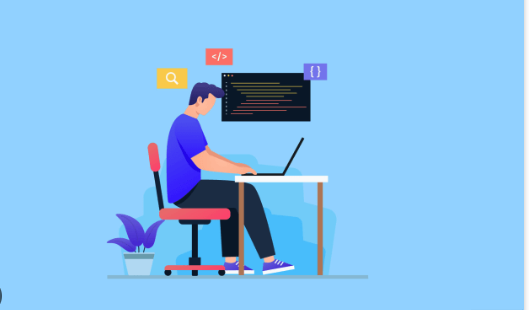Python has rapidly become one of the most popular programming languages in the world, thanks to its simplicity, readability, and versatility. Whether you’re interested in web development, data science, automation, or just learning how to code, Python is an excellent choice. In this ultimate tutorial, we’ll guide you through the process of learning Python quickly and efficiently, from setting up your environment to building your first project. By the end of this guide, you’ll have a solid foundation in Python and be ready to tackle more complex projects.
Section 1: Understanding Python and Why You Should Learn It
1.1 What is Python?
Python is a high-level, interpreted programming language known for its ease of use and readability. Created by Guido van Rossum and first released in 1991, Python emphasizes code readability and simplicity, making it an ideal language for beginners and experienced developers alike. Python’s syntax is clear and concise, allowing developers to express concepts in fewer lines of code compared to other programming languages.
1.2 Why Learn Python?
Python’s popularity has skyrocketed in recent years, and it’s now one of the most sought-after skills in the job market. Whether you’re interested in web development, data analysis, artificial intelligence, or automation, Python has a library or framework to support your goals. Additionally, Python’s extensive community support means you’ll have access to countless resources, tutorials, and forums to help you along the way.
Section 2: Setting Up Your Python Environment
2.1 Installing Python
The first step in learning Python is setting up your development environment. Python can be easily installed on various operating systems, including Windows, macOS, and Linux. Here’s how to get started:
- Windows: Visit the official Python website and download the latest version. Run the installer and make sure to check the box that says “Add Python to PATH” before clicking “Install Now.”
- macOS: Python comes pre-installed on macOS, but it’s usually an older version. You can download the latest version from the official website or use Homebrew by running the command
brew install python. - Linux: Most Linux distributions come with Python pre-installed. To install the latest version, use your package manager, such as
sudo apt-get install python3for Ubuntu.
2.2 Choosing an Integrated Development Environment (IDE)
An Integrated Development Environment (IDE) is a tool that provides a comprehensive environment for coding, debugging, and testing your applications. Here are a few popular IDEs for Python:
- PyCharm: A powerful and feature-rich IDE specifically designed for Python development.
- Visual Studio Code (VS Code): A lightweight, versatile code editor with extensive Python support through extensions.
- Jupyter Notebook: An open-source web application that allows you to create and share documents containing live code, equations, and visualizations.
Choose an IDE that suits your preferences and set it up for Python development.
2.3 Installing Essential Python Libraries
Python’s extensive standard library is one of its biggest strengths. However, there are additional libraries you might want to install to speed up your learning process:
- NumPy: A library for numerical computations.
- Pandas: A powerful data manipulation library.
- Matplotlib: A plotting library for creating static, animated, and interactive visualizations.
You can install these libraries using the pip package manager. For example, to install NumPy, run pip install numpy in your terminal.
Section 3: Core Python Concepts to Master Quickly
3.1 Python Syntax and Basic Commands
Before diving into complex topics, it’s essential to grasp Python’s basic syntax. Python uses indentation to define code blocks, which makes the code more readable and error-free.
print("Hello, World!")
This simple line of code prints “Hello, World!” to the console. As you progress, you’ll learn how Python’s clean syntax makes it easy to understand and write complex programs.
3.2 Variables and Data Types
In Python, variables are used to store data, and they don’t require explicit declaration. Here’s how you can define variables with different data types:
name = "John" # string in python age = 30 # integer is_student = True # boolean height = 5.9 # float
Understanding these basic data types will help you manipulate and store data efficiently.
3.3 Control Flow: Loops and Conditionals
Control flow statements allow you to execute certain sections of your code based on specific conditions. Here’s an example using an if-else statement:
age = 18 if age >= 18: print("You are eligible to vote.") else: print("You are not eligible to vote.")
Loops, like for and while, are used to repeat actions multiple times until a condition is met:
for i in range(5): print(i)
3.4 Functions and Modules
Functions are blocks of reusable code that perform a specific task. You can define a function using the def keyword:
def greet(name): print(f"Hello, {name}!") greet("Alice")
Modules allow you to organize your code into separate files and reuse them across projects. You can import a module using the import statement.
Section 4: Building Your First Python Project
4.1 Project Idea: A Simple Calculator
Let’s put your Python skills to the test by building a simple calculator. This project will help you apply what you’ve learned about variables, control flow, and functions.
def add(x, y): return x + y def subtract(x, y): return x - y def multiply(x, y): return x * y def divide(x, y): if y == 0: raise ValueError("Cannot divide by zero") return x / y print("Select operation:") print("1. Add") print("2. Subtract") print("3. Multiply") print("4. Divide") choice = input("Enter choice (1/2/3/4): ") num1 = float(input("Enter first number: ")) num2 = float(input("Enter second number: ")) if choice == '1': print(f"The result is: {add(num1, num2)}") elif choice == '2': print(f"The result is: {subtract(num1, num2)}") elif choice == '3': print(f"The result is: {multiply(num1, num2)}") elif choice == '4': try: print(f"The result is: {divide(num1, num2)}") except ValueError as e: print(e) else: print("Invalid input")
4.2 Project Expansion: Adding Features
Enhance the calculator by adding features such as handling exceptions, like division by zero, and providing additional operations like modulus or power.
4.3 Debugging and Testing Your Code
Learning to debug and test your code is crucial for efficient development. Use print statements or an IDE’s debugging tools to identify and fix errors. Additionally, write test cases to ensure your code works as expected.
Section 5: Essential Python Libraries to Accelerate Your Learning
5.1 Introduction to Libraries
Python’s vast ecosystem includes libraries that simplify complex tasks. Understanding and utilizing these libraries will significantly accelerate your learning process.
5.2 Key Libraries to Learn First
- NumPy: For numerical operations.
- Pandas: For data manipulation.
- Matplotlib: For data visualization.
Here’s an example of using pandas to manipulate a dataset:
import pandas as pd data = {'Name': ['John', 'Anna', 'Peter', 'Linda'], 'Age': [28, 24, 35, 32]} df = pd.DataFrame(data) print(df)
Section 6: Advanced Tips for Learning Python Fast
6.1 Practice with Online Coding Challenges
Platforms like LeetCode, HackerRank, and Codewars offer coding challenges that can help you practice and improve your Python skills. These challenges often cover important topics like Python exception handling, algorithms, and data structures.
6.2 Join Python Communities and Forums
Engage with Python communities on Reddit, Stack Overflow, or Discord. Asking questions, sharing knowledge, and solving problems together can accelerate your learning process.
6.3 Follow a Structured Course or Tutorial
Enroll in a structured Python course or follow an online tutorial series to ensure you cover all essential topics. Courses on platforms like Coursera, Udemy, or ScholarHat offer guided learning paths with practical projects.
Section 7: Avoiding Common Pitfalls
7.1 Don’t Get Stuck on the Basics
It’s easy to spend too much time perfecting the basics. While understanding fundamentals is crucial, don’t be afraid to move on to more advanced topics as soon as you’re comfortable.
7.2 Avoid Tutorial Hell
Tutorial hell occurs when you rely too heavily on tutorials without applying what you’ve learned. Balance your time between following tutorials and building your projects.
7.3 Focus on Building Real Projects
Nothing solidifies your learning like building real-world projects. Apply your knowledge by creating applications that interest you, such as a personal website, a game, or a data analysis tool.
Conclusion
Learning Python doesn’t have to be a long and tedious process. By following this structured approach, you can quickly grasp the core concepts, apply them in practical projects, and start building your Python expertise. Whether you’re learning Python to advance your career or for personal development, the key is consistent practice and applying your




